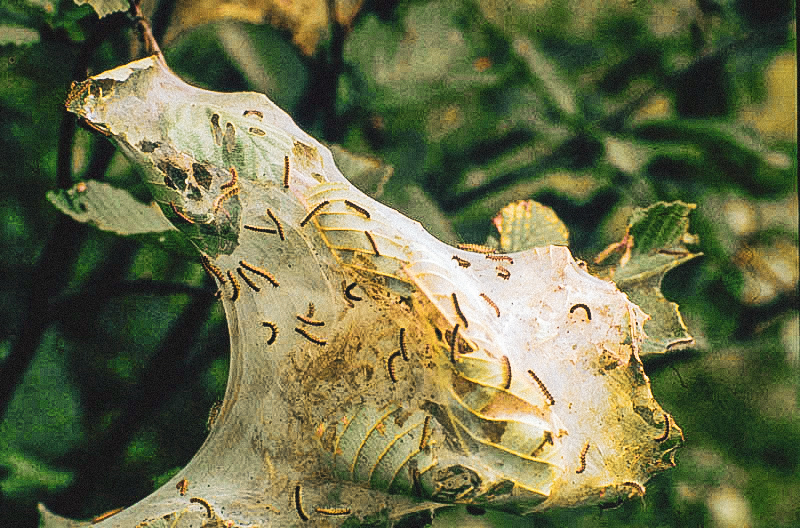Disease and Predatory Pest Control services are provided by Agricultural Services for certain pests listed under the Agricultural Pests Act. The services are provided as an aid and should be coupled with good prevention management to reduce the potential for problems both now and in the future. Learn more about the Alberta Insect Pest Monitoring Network.
When risks associated with wildlife in urban settings exist, Alberta Fish and Wildlife will be consulted to help producers and property owners deal with wildlife-caused damage.
Learn more about beneficial insects for your crops
| Questions? |
|---|
| Call 403-223-8735 Monday - Friday 8:00 am - 4:30 pm |
Bacterial Ring Rot
Visit Alberta's Bacterial Ring Rot site by clicking here: https://www.alberta.ca/bacterial-ring-rot-pest.aspx
Clubroot
Clubroot is a serious soil-borne disease of canola, mustard and other crops in the cabbage family. Cole crop vegetables like broccoli, Brussels sprouts, cabbage, cauliflower, Chinese cabbage, kale, kohlrabi, radish, rutabaga and turnip, are susceptible to clubroot, as are many cruciferous weeds, for example, wild mustard, stinkweed and shepherd's purse.
For more information on crop diseases visit the Government of Alberta website.
Coyote
The MD of Taber assists residents with predator concerns. It is virtually impossible to eliminate all predators and the damage they cause to livestock, but good management can reduce this damage and still be consistent with all types of livestock production. Since every farm is different, there is no single practice or combination of practices that will be right for every situation. Therefore, when predators strike, it is important to be aware of all options available for their control and to act at once. Please contact our Ag Fieldman at 403-223-8735 for more information.
Dutch Elm Disease
Visit Alberta's Dutch Elm Disease site by clicking here: https://www.alberta.ca/dutch-elm-disease.aspx
Fall Webworm
 What are Fall Webworms?
What are Fall Webworms?
Fall Webworms are caterpillars of a moth species that are easily identifiable by the silk webs they construct on tree branches during the summer. These larvae feed on foliage, progressively enlarging their webs as they grow. They complete their life cycle, transforming into pupae during the winter months, and emerge as adult moths in the spring. The female moth lays eggs on the underside of leaves, covered in white hairs from her abdomen, initiating the next generation.
What is their ideal environment?
Fall Webworms thrive in various environments but are commonly found in trees, particularly in areas where there is an abundance of foliage for them to feed on. They often infest trees during the summer months, constructing their webs on crown branches.
It's crucial to monitor trees regularly for signs of infestation and seek guidance from experts when dealing with Fall Webworms or any tree-related pest issues. Prompt action and proper management can help preserve the health and beauty of local trees and landscapes.
Why are Fall Webworms a problem?
While Fall Webworms might not cause severe damage to trees individually, extensive infestations could weaken trees, making them more susceptible to further insect attacks or diseases. Their unsightly webs and leaf consumption can also diminish the aesthetic appeal of trees, affecting the local landscape's beauty.
What can you do?
Our Ag Services team offers comprehensive support for managing Fall Webworm infestations. They provide information, guidance, and assistance to concerned individuals about identifying, treating, and preventing infestations. Additionally, they offer access to a tree sprayer for applying treatments effectively. Other resources on effective treatments, tree care, and pest management are also available through their services. For more information contact our Ag Services team at 403-223-8735.
Fusarium Graminearium
Fusarium head blight (FHB) is a serious fungal disease of cereal crops that affects kernel development. The main cause of FHB is the fungus Fusarium Graminearum, which results in significant losses in grain yield and grain quality, and triggers the production of mycotoxins.
Grasshopers
Visit Alberta's Grasshopper management site by clicking here: https://www.alberta.ca/grasshopper-management.aspx
Late Blight of Potatoes and Tomatoes
Late blight is one of the most serious diseases of potatoes and tomatoes worldwide, resulting in significant yield and quality losses annually. In general, Late blight occurs in Alberta infrequently but can have devastating impacts in the years when it reaches epidemic levels.
Rat Control
The Agricultural Services department is your local call for rat sightings. If you think you have seen a rat, or signs of a rat infestation, please call 403-223-8735 immediately so an investigation can begin.
Visit Alberta's Rat Control program by clicking here: https://www.alberta.ca/albertas-rat-control-program.aspx
Stored Grain Pests & Phostoxin
Phostoxin (Aluminum Phosphide) is used for the control of stored grain pests and Richardson Ground Squirrels (gophers).
To purchase Phostoxin, landowners must have obtained a Farmer Pesticide Course Certificate and the completion of either the Grain Bin Fumigation or Rodent Control module. The Farmer Pesticide Certificate is a self-taught program and the exam is administered through the Agricultural Services. Once the exam has been completed and a passing grade is accomplished, a certificate number will be issued by Alberta Government. The Farmer Pesticide Certificate is valid for 5 years from the time of issue.
